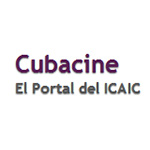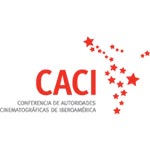Nació en Cárdenas, Matanzas, en 1947. Comenzó a trabajar con sólo 17 años en el Departamento de Animación del ICAIC.
Pasó poco después el Servicio Militar y colaboró como dibujante en la revista Mella, alternando en un espacio llamado "El Hueco", con Virgilio Martínez, y el luego reconocido canta-autor Silvio Rodríguez.
Trabajó en El Sable, suplemento humorístico de Juventud Rebelde. Graduado de Historia del Arte en la Universidad de La Habana. Su verdadero camino lo encuentra en la historieta cinematográfica: Los vampiros, Los verdugos, Los piojos, Cachibache y Elpidio Valdés. Vuelve al ICAIC en 1975 y lleva esos personajes al celuloide.
Juan Padrón se cuenta entre esos raros, escasos creadores cuya obra es indispensable a la hora de recorrer varias décadas de cultura cubana. Si se quiere entender la historia de la Isla, o las construcciones mentales del inconsciente colectivo acerca de cómo fuimos, somos y seremos, es obligatorio el acercamiento a Elpidio Valdés y Vampiros en La Habana. No solo en el dibujo animado del ICAIC, sino en el mundo de la historieta Juan Padrón ha marcado a varias generaciones de cubanos con historias y personajes donde privilegia el humor, la cubanía, el colorido, la gracia criolla.
En buena parte se debe al propio Juan Padrón el hecho de que pueda hablarse de una Escuela Cubana del dibujo animado. Dice Juan: “Tiene características que lo distinguen entre los otros en cuanto el color, el ritmo y la banda sonora, tiene efectos de ambientes. Al principio veíamos el dibujo animado como didáctica. Con el tiempo nos fuimos desprendiendo de ese lastre que nos obligaba a tener siempre que explicar algo, y se comenzaron a hacer cosas diversas. En el caso de Elpidio Valdés, el objetivo era, de forma humorística, contar la guerra de independencia, con una enseñanza detrás.”
Es curioso comprobar que Elpidio Valdés, con todo y su enorme popularidad actual fuera y dentro de Cuba, vino al mundo como personaje secundario en la historieta de samurais Kashibashi. Además, la historia del valiente y simpático mambí implicó para su creador decenas de horas investigando en archivos sobre las guerras de independencia, el vestuario de la época y los tiempos y espacios del siglo XIX cubano.
Padrón reconoce la influencia, en sus inicios, de varios dibujantes españoles de los años cincuenta: Peñarroya, Vázquez, Conti, y de un excelente animador y dibujante catalán que vivía en La Habana, que lo tomó de discípulo, Juan José López, autor de Superlópez. También lo influyeron Ketcham, el de Daniel el Travieso. En 1974 nace el primer animado de Elpidio Valdés, el célebre insurrecto, con casi siete minutos, titulado Una aventura de Elpidio Valdés. A ese le siguieron varios cortos, hasta 1979, cuando se realiza el largometraje Elpidio Valdés, con 70 minutos. En 1983 se estrena otro largo, Elpidio Valdés contra dólar y cañón, y dos años después Vampiros en La Habana, considerado internacionalmente un filme de culto. Sobre esta película, Padrón ha dicho: “Cuando la terminé y la vieron los ‘expertos’, dijeron que no era lo que esperaban de mí, que era muy vernácula, confusa y ruidosa; no se hizo rueda de prensa para anunciarla, ni estreno. En una revista salió una crítica que trataba muy mal a la película... Estuve unos días muy deprimido, hasta que rompió el récord de taquilla (de aquella época) en una semana y la gente la comentaba entusiasmada. Me he sentido como Spielberg cuando en Valparaíso me recibieron cientos de estudiantes amantes de la película, o en Puerto Rico, donde se la sabían de memoria, en fin... Es algo muy agradable y estimulante”.
En 1985, en la capital cubana, se inició su colaboración con Quino, el historietista argentino de fama mundial. En 1986 apareció el primer Quinescopio, y le siguieron otros 51, animados con dibujos de Quino. Mafalda, también en movimiento, vio la luz en 1993. Padrón ha recibido las máximas condecoraciones que se otorgan en Cuba a sus mejores artistas: la orden Félix Varela de primer grado, la medalla Alejo Carpentier, el premio El Diablo Cojuelo, ocho Premios Coral en el Festival Internacional del Nuevo Cine Latinoamericano y casi todos sus animados han sido destacados por la crítica.
Por su extraordinario aval artístico, Juan Padrón es de los indispensables cada vez que se hable de animación en Latinoamérica. Elpidio Valdés es el personaje más popular en la historieta y el dibujo animado en Cuba. Merecedor de numerosos premios internacionales y nacionales. Recibió en 1989 el Premio anual de periodismo Juan Gualberto Gómez, otorgado por la UPEC, por su labor en el cine. En 2008 se le otorgó el Premio Nacional de Cine.
Juan Padrón (1947-) was born in Cárdenas, Matanzas. He started to work with only 17 in the Animation Department of ICAIC.
Shortly after he joined the military service and worked as a draftsman in the magazine Mella, and also in the cultural space "El Hueco" with Virgilio Martínez and with the later recognized songwriter Silvio Rodriguez.
He worked in El Sable, a humorous supplement of the journal Juventud Rebelde. He graduated in Art History at the University of Havana and found his true path by creating the comics Los vampiros, Los verdugos, Los piojos, Cachibache and Elpidio Valdés. He returned to ICAIC in 1975 and animated these characters in films.
Juan Padrón is one of those rare, unusual artists whose work is indispensable when panning several decades of the Cuban culture. If you want to understand the history of the island, or the mental constructions of the collective unconscious of how we were, are and will be, it is mandatory to approach to Elpidio Valdes and Vampiros en La Habana. Not only in the cartoon of ICAIC, but in the world of comics (in the magazine Mella or the humorous supplement Juventud Rebelde). Juan Padrón has marked several generations of Cubans with stories and characters which give priority to humor, Cuban elements, and the colorful and native grace of the islanders.
One can speak of a Cuban School of animated cartoons due mainly to Juan Padrón. He says: "It has features that distinguish it from others in terms of color, rhythm, soundtrack and environment’s effects. At first we saw the cartoon as didactic. Over the years, we became detached from the burden that forced us to always having to explain something, and we began to do different things. In the case of Elpidio Valdés, the objective was, in a humorous way, to narrate the war of independence, with a moral in the story".
It is curious that Elpidio Valdés, with all its enormous current popularity inside and outside Cuba, was born as a suporting rol in the samurai cartoon Kashibashi. Moreover, the history of the brave and sympathetic rebel involved its creator in dozens of hours of research in archives on the wars of independence, getting to know the costumes of those times and the spaces of the 19th century in Cuba.
Padrón recognizes the influence that several Spanish artists from the 1950s had on his work. Some of them were Peñarroya, Vazquez, Conti, and Juan José López -author of Superlópez- who was an excellent Catalan animator and illustrator that lived in Havana and accepted him as a pupil. Ketcham, the author of Daniel el Travieso, also influenced him. The first animated Elpidio Valdés was born in 1974. The film was almost seven minutes, it was entitled Una aventura de Elpidio Valdés and is the story of a famous rebel. It was followed by several short films, until 1979, when he made the 70 minutes feature film Elpidio Valdés. In 1983, he released another feature film, Elpidio Valdés contra dólar y cañón, and two years later Vampiros en La Habana considered internationally as a cult film. On this film, Padrón said: "When I finished it and the 'experts' saw it, they said this film was not what it was expected from me. It was very vernacular, confusing and noisy. No press conference was made to announce its release. A very desfavorable review of the film appears on a magazine... I was very depressed for a few days until the film broke the box-office records (of the time) in a week and people talked about it with enthusiasm. I felt like Spielberg when hundreds of film students who loved my movie received me in Valparaiso and in Puerto Rico. They knew the dialogues by heart. It was very pleasant and stimulating".
In 1985, in Havana, he began his collaboration with Quino, the Argentine world famous cartoonist. In 1986, the first Quinescopio appeared, and it was followed by 51 others, all Quino animated drawings. Mafalda, also in motion, was born in 1993. Padrón has received the highest awards that are granted in Cuba to its best artists: The Order Félix Varela, the Medal Alejo Carpentier, the prize El Diablo Cojuelo, eight Coral awards in the Havana International Film Festival and almost all of his cartoons have been highlighted by critics.
For his extraordinary artistic career, Juan Padrón became indispensable each time that one talks about animation in Latin America. Elpidio Valdés is the most popular character in comics and cartoons in Cuba. Padrón has received many international and national awards. He obtained the 1989 annual journalism prize Juan Gualberto Gómez, awarded by the UPEC, for his work in film.
Web: www.cubacine.cu/dibujosanimados/directores/jpadronm.htm
 “Nuestro objetivo final es nada menos que lograr la integración del cine latinoamericano.
Así de simple, y así de desmesurado”.
“Nuestro objetivo final es nada menos que lograr la integración del cine latinoamericano.
Así de simple, y así de desmesurado”.













